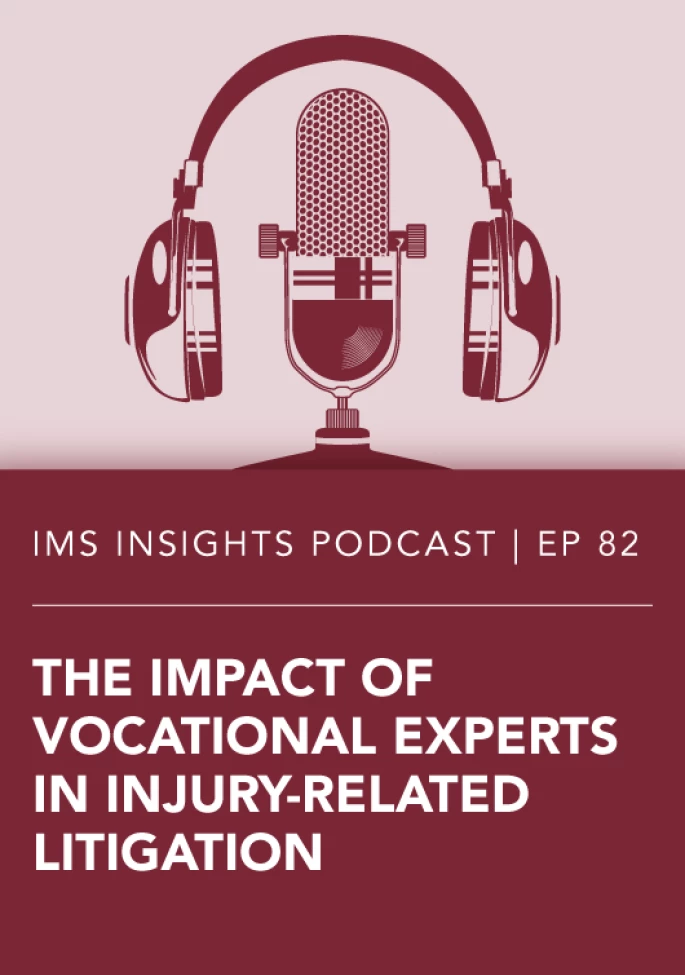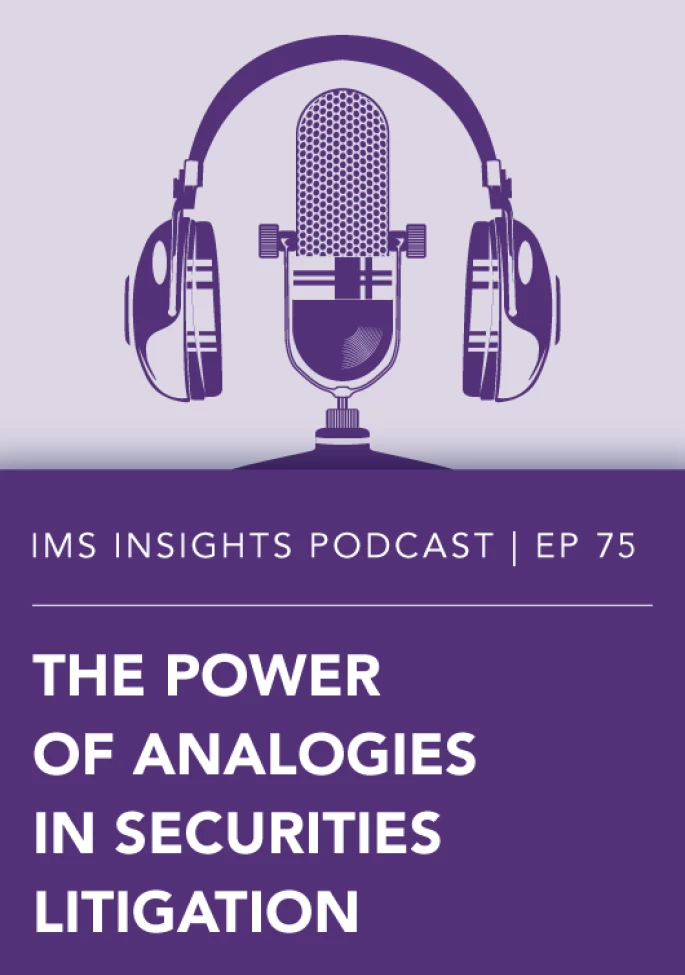Teresa Barber: Dan, welcome. Thank you so much for joining us today.
Dan Castro: Thank you. This should be interesting.
Barber: Yeah, I'm really excited about some of the things that we're going to be discussing. And one of those things, I know, (is that) you've been very closely monitoring the implications and fallout from COVID-19 on various industries. Can you talk to us a little bit more about what you've been seeing?
Castro: Yeah, I think the biggest thing, and maybe the most obvious thing, is just the enormous government response – a lot of it's been necessary, but so far they've spent (what) looks like about six trillion. And there's further proposals on the table for another two to five billion of additional spending on top of that, and that really means two things: some of it’s going to be paid for with higher taxes, and a lot of it's going to be paid for with additional debt. (I) don't know the split between the two – but people are going to be paying for this for a long time in the future.
Castro: The second thing is just the economy in general. It's going to be recovering (and) rebuilding as we come out of COVID. And one of the impacts that I'm seeing right now is that a lot of people, they've been working from home, and they continue to. And I've seen a lot of people (that) I've talked to in the last month who have gone back to working in the office, but they're not going back full time. They're working one or two days a week in the office, and most of them think it's going to be permanent – that they'll be working some portion at home, and some portion in the office.
Castro: And one of the impacts of that is the large office space isn't going to be completely full. There's going to be some empty office space out there, because you just don't need as much space with some portion of people working from home. And that's going to impact large businesses and large spaces. However, the smaller spaces – and one thing most people don't realize is like 75% of the office space in the US is under 10,000 square feet, it's mostly (for) small businesses – those will come back at some pace.
Castro: So, the smaller office space may not be so busy, but (in) the larger space(s) there's going to be a lot of vacancies, and people are going to have to repurpose some of that space for other things. So I think that's a couple things that will impact a lot of things going on.
Barber: Along those lines, are we seeing any parallels to what was leading up to the 2008 financial crisis?
Castro: Yeah, I think there's actually several things. I mean, the first thing, you know what I mentioned, is the government during the financial crisis, and after, and now in the pandemic, there was a lot of government intervention. And during the financial crisis, people thought it was pretty significant. But compared to what's going on now, it's actually pretty minor, in comparison; the intervention now is much greater than it was (then).
Castro: And some of that is going to result in – for instance, in the financial markets – more government debt that will crowd out other kinds of debt. And we saw that during the financial crisis, and after. And the same thing is going to happen now, except to a larger extent. As you put government debt out there, that's the most liquid thing there is. So, the money will gravitate there, and that means less money for what's next in line – which might be corporate debt, structure, finance debt, things like that.
Castro: And then, it keeps going down the chain (to the) less liquid stuff, like high-yield debt, and then alternative assets. There'll be less money available for those things. So that will happen over the next year or two, and then things will stabilize at some point, so that's very similar to the financial crisis. And then the other thing is (that) a lot of people lost money in the financial crisis — same thing in the pandemic. And the result of that was a lot of litigation. People will be pointing fingers of blame in all directions, and the different parties will be suing each other. So, there's going to be an explosion of litigation, just like there was after the financial crisis.
Barber: And it's been interesting with the pandemic, (which has been such a) terrible situation but on a positive note at the same time, it's kind of catalyzed or sped up innovation. We've even seen new markets and new types of customer demand. So, you're mentioning this change in how companies are working and staggered workforces, (and how) even new(er) types of customer demand and new markets (are) emerging. Online purchasing behaviors (have also) changed (and have) really expanded, and we've seen a growth in things like online car sales really exploding amid COVID. So, with this greater access are we seeing greater activity in subprime auto lending? What are you seeing in that sector?
Castro: Yeah, subprime auto lending is growing very rapidly. And you know, one of the reasons is (that) most of that is associated with used car sales and used car sales have jumped substantially for multiple reasons. One (is that) new cars are more expensive. People had less income during the pandemic, so they're gravitating towards used cars. And the other thing is (that) there's a problem with new car production right now because there's a chip shortage out there. New car production has fallen off, so the availability of new cars is less than what it was. So, you're going to see more of that going forward.
Castro: I guess the other thing is, there's a lot more scrutiny on the subprime auto sector (now) because this is another parallel with the financial crisis. (In the) financial crisis, one of the primary things was housing and subprime housing and subprime loans. And I've been told by folks at the United States Securities and Exchange Commission (SEC) that they're viewing the subprime auto industry in the same way. You had (a) loosening of lending standards back in the financial crisis on housing. (Now it’s the) same thing with subprime autos – because they loosen the standards. They also do things like create what I'll call affordability products.
Castro: So, in the mortgage space, they would do things like extend the terms. It used to be (that) you had only thirty-year mortgages, (but then) they moved it out as far as forty years. (Mean)while, in the auto industry, everything used to be two- and three-year loans. Now, they go four, or five, (or) six (years). They go out to eighty-four months now, and the reason they do that is (because when) you extend the period, the payments get smaller. And just like in the subprime mortgage crisis, you saw down payments decrease. Well, in the used car market, now you can get no-down-payment loans.
Castro: So (now), it's the same thing – and the result of those affordability products, and those listening to standards, is (that) defaults and delinquencies will rise, and you'll get litigation because of that. So (there are) very strong parallels with the financial crisis.
Barber: (It’s a) very interesting moment, and I want to talk a little bit with you about investments. I know you've been watching several areas and trends in ESG, so I want to talk a little bit about ESG investments, (which are) almost like the new triple bottom line. Can you talk to us about what ESG is and why we should care?
Castro: Sure. ESG actually stands for Environmental, Social, and Governance, and investors are increasingly applying these non-financial factors as part of their analysis. So, instead of just doing a pure financial analysis, they're also looking at these other factors – whether they’re environmental, social, or governance. The coronavirus pandemic has actually accelerated that (trend), so there's more focus on the interconnectedness of sustainability in the financial system.
Castro: ESG actually came out of what they used to call socially responsible investing. And there (are) a few things that are different about this, because now you're looking at not just finding (the) values of companies, but also supporting the values that those companies have in the way they conduct their business. And the other thing is, it's becoming more interesting to not just investment professionals — but (to) governments, asset owners, and investors of all types to see how those ESG factors impact their investments and local markets.
Castro: There's just more consideration of ESG factors from financial professionals on how (those) can improve their fundamental analysis and how they undertake – and also ultimately make – their investment choices that they make. So (there’s) a lot going on there.
Barber: Well, that's interesting. Speaking about choice, are there differences in (the) choices (available) across the equity and fixed income markets, and any that you would deem as (the) most solid, (or) the best?
Castro: Yeah, I think (with) the equity markets it's a lot easier, because you can focus on companies that claim to have ESG standards in one way or the other. And there's a lot of companies out there that still say they do that, and they can back it up to some extent. In the fixed income market, it's more difficult because I've only seen a couple places where you (can) see that. One, in the CLO market, we've seen some CLOs claim they have ESG loans in their portfolios — but that's only partially in their portfolios. I haven't seen any that are 100% — or even close to that.
Castro: So, they'll have some of it there. But the other thing that I've seen out there is what they call PACE assessments. PACE assessments are loans made on commercial and residential property which actually improve the energy efficiency of the property. So, the loan itself actually meets the ESG criteria, because you're actually improving the property and doing it in an environmentally friendly and energy efficient way.
Castro: And the thing about PACE assessments is, technically they call them assessments because they're tax assessments. Technically, they're really loans, and they finance the energy upgrades. The great thing about these – unlike the leveraged loans that might go into CLOs, (where) there's a lot of risk in the leveraged loans – but in the PACE financings, they all have a super first lien on the property. And what that means is their lien comes ahead of any mortgage, or anything else that's already on the property. And those loans get paid at the same time, and with the same payment as the property taxes.
Castro: And that's why you see very little defaults. I'm aware of one originator who's been doing this since the beginning of the market. These guys have done over a billion dollars of this stuff over the last ten years, (and) they've not had a single default. That's exceptional.
Castro: It's not the same as anything else, so it meets the ESG criteria, and it's also exceptionally safe. It's probably my leading candidate for something that people should look for in the fixed income side.









